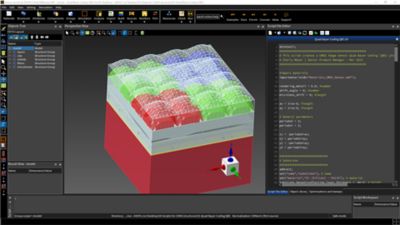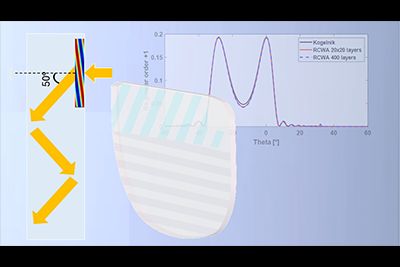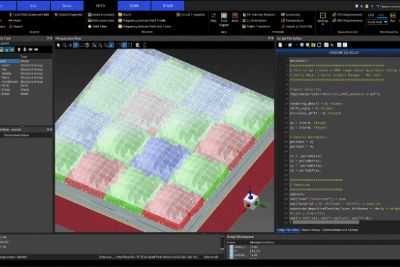规格速览
Ansys Lumerical FDTD可与Ansys Lumerical CML Compiler、Ansys多物理场求解器、Ansys Speos、Ansys Zemax和第三方电子-光子设计自动化(EPDA)供应商无缝协作,以实现快速、准确、可扩展的光子设计。
Ansys Lumerical FDTD是一款光子仿真软件,其在统一设计环境中集成了FDTD、RCWA和STACK求解器。这有助于对衍射光栅、多层镀膜、uLED、CMOS图像传感器、超透镜和超表面等各种器件进行精确分析和优化,从而可在不同应用中实现业界领先的性能。对于最复杂的设计,Ansys Lumerical FDTD可实现快速的虚拟原型设计和数千次迭代的验证。

Ansys Lumerical FDTD可与Ansys Lumerical CML Compiler、Ansys多物理场求解器、Ansys Speos、Ansys Zemax和第三方电子-光子设计自动化(EPDA)供应商无缝协作,以实现快速、准确、可扩展的光子设计。
2025年1月
Ansys Lumerical FDTD 2025 R1版本通过的强大GPU加速仿真,实现了:更快的网格划分及更广泛的系统建模;AR/VR中全息光栅设计的创新的分层重复;以及流畅、简洁的用户界面,提供了卓越的效率和可用性。

Ansys Lumerical FDTD的最新增强功能引入了GPU加速仿真,不仅可大幅节省内存,而且还可缩短网格划分时间。这一发展有助于光子学工程师和研究人员以更高的效率仿真更大的系统,从而在不影响性能的情况下更轻松地处理更复杂的设计和系统。

RCWA中用于仿真体全息光栅的分层重复功能,为用户提供了快速的全息光栅多层仿真,可充分满足AR/VR及平视显示器应用的需求。

Ansys Lumerical FDTD用户界面采用现代简洁设计,新的选项卡式工具条可实现高效的启动操作并提高可用性。
功能
Lumerical FDTD是业界领先的仿真软件,可用于设计和优化各种光子器件。Lumerical FDTD具有出色的通用性和可扩展性,不仅可提供卓越的速度,而且还可充分利用HPC(CPU和多GPU)和云计算资源。
要让包括残障人士在内的所有用户都能访问我们的产品,这一点对于Ansys而言至关重要。因此,我们始终致力于遵循基于美国访问委员会(第508节)、Web内容可访问性指南(WCAG)和当前自愿产品可访问性模板(VPAT)格式的可访问性要求。
如果您面临工程方面的挑战,我们的团队将随时为您提供帮助。我们拥有丰富的经验并秉持创新承诺,期待与您联系。让我们携手合作,将您的工程挑战转化为价值增长和成功的机遇。欢迎立即联系我们进行交流。